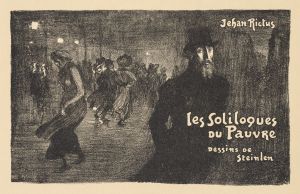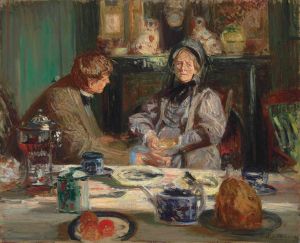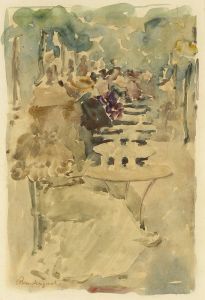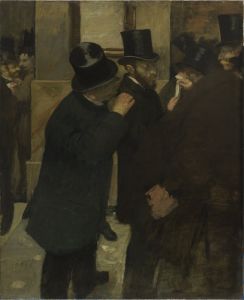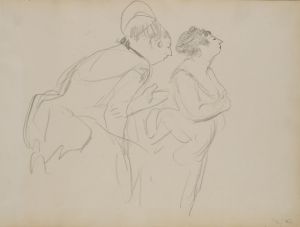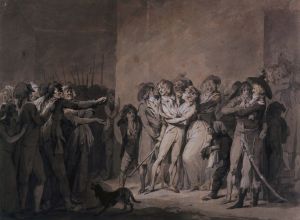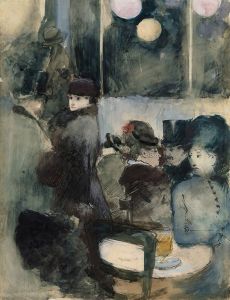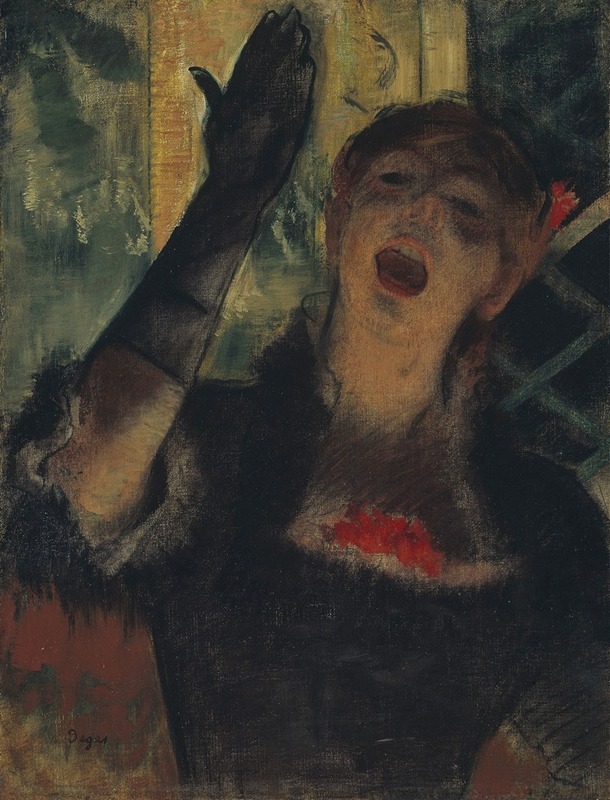
Café Singer
A hand-painted replica of Edgar Degas’s masterpiece Café Singer, meticulously crafted by professional artists to capture the true essence of the original. Each piece is created with museum-quality canvas and rare mineral pigments, carefully painted by experienced artists with delicate brushstrokes and rich, layered colors to perfectly recreate the texture of the original artwork. Unlike machine-printed reproductions, this hand-painted version brings the painting to life, infused with the artist’s emotions and skill in every stroke. Whether for personal collection or home decoration, it instantly elevates the artistic atmosphere of any space.
Edgar Degas, a prominent French artist known for his contributions to Impressionism, created the painting "Café Singer" in the late 19th century. This work is part of Degas's exploration of modern life in Paris, capturing the vibrant and dynamic atmosphere of the city's café-concerts, which were popular entertainment venues during that era.
"Café Singer" is an example of Degas's interest in depicting scenes of contemporary life, focusing on the performers and audiences of Parisian nightlife. The painting portrays a singer performing in a café, a setting that was both fashionable and emblematic of the social changes occurring in Paris at the time. Degas was known for his keen observational skills and his ability to capture the essence of a moment, and "Café Singer" reflects this talent.
In this painting, Degas employs his characteristic style, which combines elements of Impressionism with a more structured approach to composition and form. Unlike many of his Impressionist contemporaries, Degas often preferred to work indoors, using artificial lighting to create dramatic contrasts and highlight specific details. This technique is evident in "Café Singer," where the lighting plays a crucial role in focusing the viewer's attention on the singer, while the background remains less defined, suggesting the bustling activity of the café.
Degas's use of color and brushwork in "Café Singer" is notable for its subtlety and precision. He often used pastels in his works, which allowed him to achieve a delicate balance between color and texture. This medium enabled Degas to capture the nuances of light and shadow, adding depth and vibrancy to the scene. The singer's figure is rendered with a sense of immediacy and movement, reflecting Degas's interest in the human form and his ability to convey emotion through gesture and posture.
The subject matter of "Café Singer" is consistent with Degas's broader artistic themes, which frequently included performers such as dancers, musicians, and singers. These subjects allowed Degas to explore the interplay between public performance and private experience, a theme that resonated with the social dynamics of his time. By focusing on the café singer, Degas not only highlights the entertainment culture of Paris but also provides insight into the lives of those who inhabited this world.
Degas's work, including "Café Singer," is characterized by its attention to detail and its ability to capture the fleeting moments of modern life. His paintings often reveal a deep understanding of human behavior and social interaction, making them enduringly relevant and engaging. "Café Singer" is a testament to Degas's skill as an artist and his commitment to depicting the world around him with honesty and sensitivity.
Overall, "Café Singer" exemplifies Edgar Degas's mastery of capturing the essence of Parisian life during the late 19th century. Through his innovative use of composition, color, and light, Degas creates a vivid portrayal of a moment in time, inviting viewers to experience the energy and allure of the café-concert scene. This painting remains an important part of Degas's oeuvre and continues to be appreciated for its artistic and historical significance.





